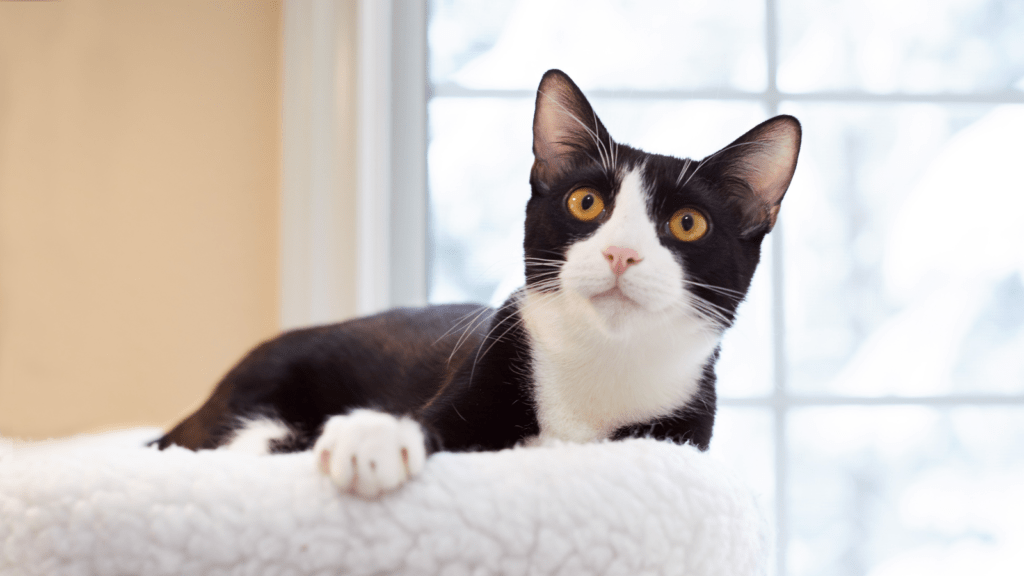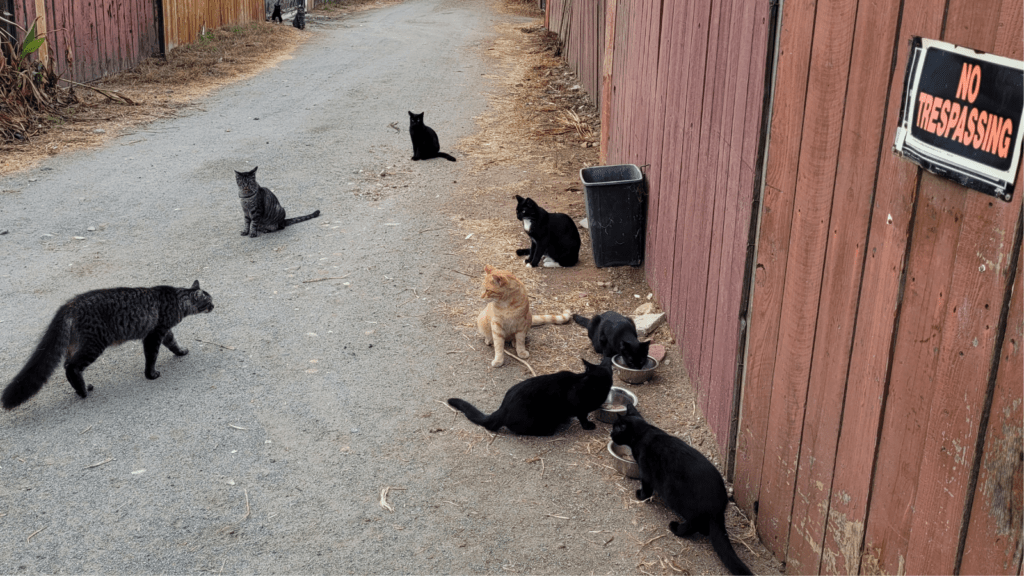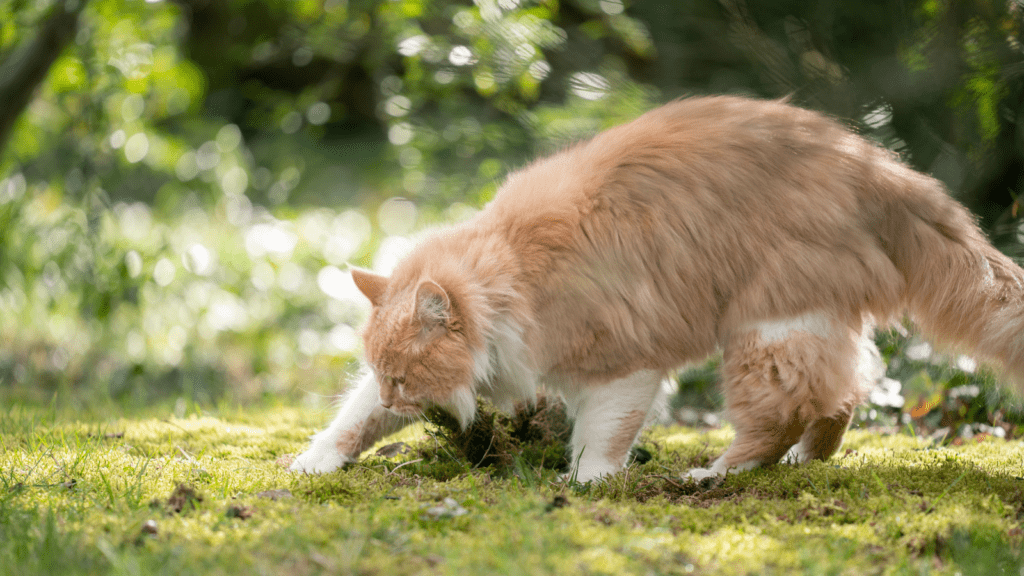
Why Do Cats Bury Their Food?
Have you ever wondered why cats bury their food when they are finished eating by trying to cover it with a placemat or towel or just by digging at it? It’s a curious habit that is quite baffling. In this article, we will “uncover” the burying behavior and shed light on the intriguing caching behavior.
Cats burying their leftover food is a behavior that is deeply ingrained in their instincts and can be traced back to their wild ancestors. So, why do cats bury their food? This behavior serves various purposes, each revealing something unique about our feline friends.
From their instinctual need to hide and protect their food from predators to their territorial marking and resource preservation, these are some reasons cats literally cover their uneaten food.
Instinctual Behavior Passed Down from Wild Cats
Cats hiding food isn’t just a domestic cat or kitten behavior. It can be traced back to their wild ancestors. This instinctual behavior has been passed down through generations of domestic cats, revealing their natural instincts for survival.
Wild cats, such as lions and tigers, often try to bury their prey to protect it from scavengers and other predators. This behavior served as a way for them to hide and store smaller portions of food for later consumption. It was an essential survival strategy in the wild, where food scarcity and competition were common.
Although our domestic cats and kittens don’t have the same need to hunt and kill for their food, this ancient behavior remains ingrained in their DNA. When cats bury their leftovers, they are tapping into their instinctual drive to protect and preserve resources, just like their wild counterparts.
Even though domestic cats don’t face the same challenges as wild cats when it comes to finding food, their survival instinct remains intact. Burying their food is a manifestation of their innate need to secure their meals and ensure they remain safe from any potential threats. It’s a behavior that has been hardwired into their genetic makeup.
Understanding this natural behavior in cats can help us appreciate the depth of their instincts and the fascinating ways in which they connect with their wild heritage. By recognizing their survival instincts, we can create environments that cater to their needs and provide them with a sense of security in our homes.
The Need for Food Caching
Cats, known for their agile and independent nature, have a unique way of ensuring the safety of their food, also called food caching. Food caching involves cats hiding or burying their food to protect it from being eaten by predators and scavengers.
As natural predators, cats have an innate understanding of the potential dangers lurking in their environment. By hiding their cat food, they minimize the risk of attracting too much attention.
Cats bury food as a clever strategy to maintain a secure food source. By hiding meat, cats ensure that other predators or competitors are less likely to discover and steal their valuable resources. This behavior not only ensures their own sustenance but also increases their chances of survival.
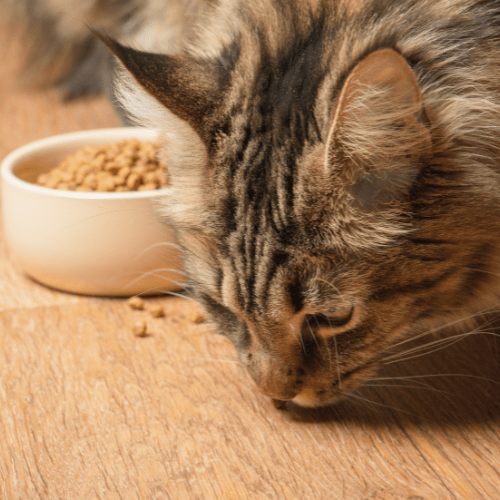
Food caching is deeply rooted in their instincts, harkening back to their days in the wild. In the wilderness, cats would often have to hunt for their meals and might not always be successful. By hiding or burying their prey, they could return to it later if needed.
This behavior also helps them prevent the scent of their food from attracting potential threats. Cats are known to have a keen sense of smell, allowing them to detect predators or other animals that may pose a threat to their food source.
Even though domestic cats may not face the same challenges as their wild counterparts, the need for food caching remains ingrained in their behavior. Whether they are well-fed, healthy pets or outdoor cats, hiding their food is an instinctual behavior that provides a sense of security and satisfies their natural predatory instincts.
Covering and Hiding Prey
Have you ever wondered why your feline friend insists on covering their food? This behavior might seem peculiar, but it actually has deep roots in their natural hunting instincts. Just like their wild counterparts, your domestic kitty might have an innate drive to hide or bury their prey.
When cats cover their food, they are reenacting the ancient ritual of hiding their prey. In the wild, cats rely on their hunting skills to survive, and once they have successfully caught their prey, they need to protect it from other predators. By covering their food, cats create a makeshift camouflage that helps them avoid drawing attention to their meal.
But why do cats feel the need to scratch and cover their food dish or water bowl, even in the comfort of your home? Well, this behavior is deeply ingrained in their instincts. Scratch-marking their food is a way for cats to claim ownership over it. By leaving their scent on the food, they are marking a notice that it’s their territory, even if there are no other cats around.
Additionally, cats try to hide their food as a way for cats to preserve it for later, especially if you give them too much food. Just like in the wild, where cats may not always have immediate access to prey, domestic cats instinctively hide their food as a strategic move.
Territory Marking and Resource Protection
Burying food is not only a way for cats to ensure their meals are safe but also a method of territory marking and resource protection. Cats have a highly developed sense of smell that they use to identify their living areas and mark them as their own.
When cats bury their food, they leave behind their scent in the surrounding living area. This scent serves as a signal to other cats, dogs, and many species and other pets, indicating that the territory is claimed and that valuable resources are being protected. This behavior helps cats establish and maintain their space, deterring other animals from encroaching.
The sense of smell plays a crucial role in this behavior. By leaving their scent on buried food, cats effectively communicate their ownership of the area. Even cats who eat dry food and not just meat can be seen scratching in an attempt to feed.
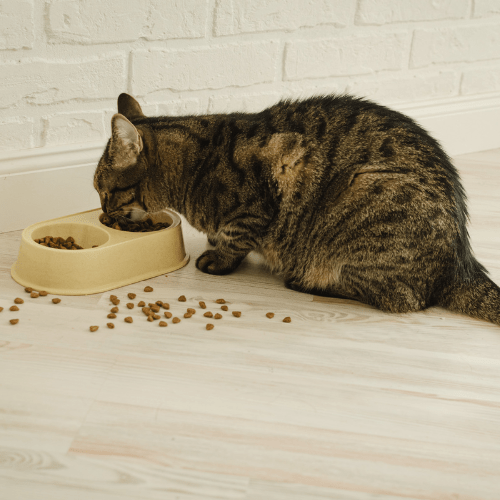
This territorial marking behavior is especially important for pet parents to be aware of in multi-cat households, where multiple feline companions may coexist. Burying food helps individual cats define their space and minimize conflicts that may arise over resources.
It’s important to note that not all cats exhibit this behavior. Some cats may not feel the need to mark their territory in this manner, while others may have different ways of asserting their ownership. Individual differences in behavior are common among cats, just as they are in humans.
Understanding the significance of food burying as a territory-marking behavior can provide insights into cat behavior and help ensure a harmonious coexistence in multi-cat households.
Behavioral Quirks and Individual Differences
While burying food is a common behavior among cats, not all cats exhibit this quirky trait. Every cat has its unique personality, preferences, and habits, which can vary when it comes to burying food. Let’s explore the reasons behind these individual differences and uncover the fascinating behaviors associated with them.
Cat Scavengers and their Instincts
Cats, as natural-born predators, often have a strong instinct to hide their food from potential scavengers. While some domestic cats may still possess this instinct, especially those with outdoor access or feral backgrounds, many house pets may not feel the need to bury their meals. It depends on factors like genetics, upbringing, and overall environment.
Curiosity and Playfulness
Some cats view their food bowl as a source of entertainment rather than nourishment. Their playful nature might lead them to paw at their food or even scatter it around the house rather than burying it. These mischievous behaviors can create a messy situation for pet owners who may find stray kibbles or wet food remnants hidden in unexpected places.
The Cleanliness Factor
In contrast to the scavenger instinct, some cats are neat freaks who prefer a tidy dining experience. Instead of burying their food, they may actively avoid making a mess by carefully consuming their meals without any attempts at covering them up.
If the litter box is too close to the feeding area, some cats will often bury their food bowl to keep it from the litter, which is a strange behavior. If that happens, don’t worry because the easy short answer is to move the litter box further away.
Individual Food Bowl Preferences
Just like humans, cats have unique personalities and preferences that shape their behaviors. While some cats may try to cover their food out of instinct or habit, others may have no interest in burying it at all. If your cat is making a mess with their food, you can try to change their food bowl to one that will splash less.
Conclusion
The act of burying food is an instinctual behavior deeply ingrained in cats. This behavior can be traced back to their wild ancestors as a means of protecting their meals from predators and scavengers. It serves multiple purposes, including territorial marking and resource preservation.
Burying food allows cats to establish and maintain their living areas, mark their territory, and safeguard valuable resources. It is a fascinating aspect of their instinctual and survival-driven behavior.
While not all cats exhibit this behavior, it remains a common trait among many feline pets. Appreciating the various purposes and nuances of this behavior enhances our understanding and connection with these mysterious creatures. As cat owners, we can observe and appreciate the natural instincts that drive their every move, including their fascinating tendency to bury their food.

